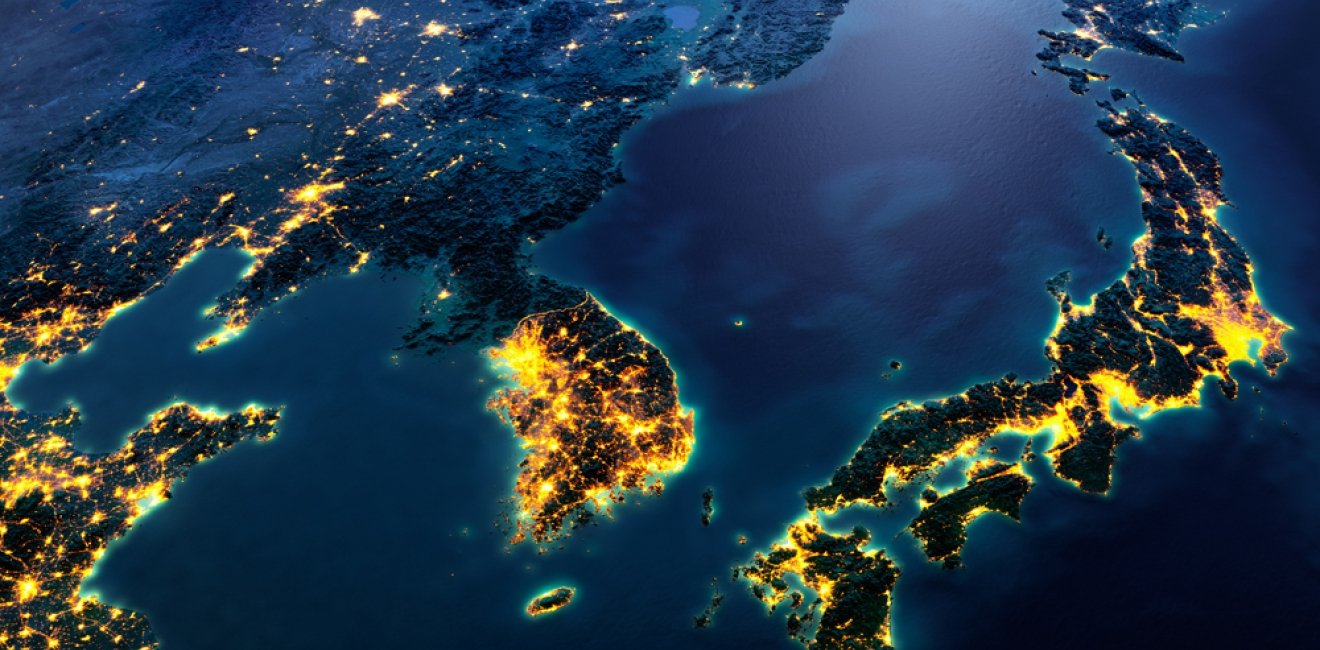
A blog of the Indo-Pacific Program

For all the political upheaval and security risks worldwide over the past year, 2017 has been a good year for much of the global financial markets, and Asia has been no exception. The spillover effect of the robust economic performance by the United States in particular has been felt strongly in Tokyo, Seoul, and Taipei, in spite of ever-growing worries about North Korea’s nuclear ambitions and the possibility of an outright military conflict breaking out in the region. There are, of course, other concerns that loom large over the horizon, not least an uncertain outlook for the U.S. economy in the year ahead and high debt levels, as well as the still-real threat of war in the region. At the same time, there are three potential political risks weighing down continued growth in Northeast Asia, namely a rise in economic nationalism; frictions over new trade deals; and dealing with seismic demographic shifts.
Collision of nationalism and economic interests
The list of common challenges that Tokyo and Seoul face is long, from dealing with the North Korean threat to balancing the need to have strong economic ties with China while remaining firmly under the U.S. security umbrella. Yet tensions between Japan and Korea still remain over the legacy of historical memory and the politicization of history is actually taking a bigger, not smaller, part in diplomatic relations. From the beginning, the 2015 comfort women agreement which should have been a “final and irreversible” pact between the two countries regarding Korean women who were forced into sexual slavery under Japanese occupation had been controversial. Seoul’s push to revise or scrap the deal altogether has only heightened since the election of President Moon Jae-in in May, even though North Korea stepped up its missile testing and global concerns about Pyongyang’s ambitions surged since then. So far, however, the politics of history has not impacted economic relations between the two countries. Speculation is rife, however, that one reason the economic dialogue to discuss issues such as taxes and revenue between the two sides scheduled before the end of 2017 was postponed as a direct result of frustration from both countries about the comfort women issue.
The question moving forward is whether current tensions between Tokyo and Seoul will lead to policies to undermine the economy of the other for political gain. Seoul has already felt the pain of political objectives driving economic policy, as it was forced to acknowledge the power that Beijing wields over the Korean economy. Certainly, China’s decision to take punitive action against South Korea for deploying a U.S. missile defense system earlier in 2017 was a blow for major Korean corporations including supermarket giant Lotte and car maker Hyundai. Japan and Korea must ensure that boycotts, tariffs, and other discriminatory measures are not used to score political points. Amid worries of inflated asset prices worldwide in a closely intertwined global economy, the two countries need to work more closely together - not less- to ensure that they are prepared for a financial crisis.
Trade deals upending regional order
U.S. withdrawal from the Trans-Pacific Partnership agreement could have been the end of the world’s most ambitious trade deal to date. Instead, the 11 other TPP member countries have rallied to support the pact without Washington and are now moving forward to try to reach the end goal of a TPP minus the United States. That would mean both the world’s biggest and second-largest economies would not be part of the framework that would define trade relations in the Asia-Pacific in the years ahead. While the United States has shown no resistance for TPP11 to move forward, the deal would undoubtedly pit member nations including Japan, Australia, and New Zealand against their biggest trading partner, China. With Tokyo concluding a free trade agreement with the European Union in 2017 as well, Japan has effectively positioned itself as the nation championing multilateral trade deals in both the Pacific and the Atlantic. While the actual gains to be made in terms of GDP growth through TPP11 and the Japan-EU Economic Partnership Agreement can be debated, Japan will clearly be playing a larger role in defining free trade rules and more broadly, the rule of law across borders. Japanese Prime Minister Shinzo Abe will undoubtedly be leveraging Japan’s position as the champion of global trade which in turn would pit Tokyo against Beijing as the region’s hegemon.
Demographics hurting competitiveness
Declining birthrates coupled with a growing elderly population has been an increasing fiscal challenge for most industrialized countries, especially in Asia and Europe. Yet the demographic imbalance poses a far greater challenge beyond simply weighing down on government coffers. One challenge, of course, is the fact that while automation and robots may be able to offset some of the need for actual workers, there will be a widening skills gap in how workers are being trained and what they will actually need to do. Embracing a greying workforce will be key for economic survival, but at the same time, the need for employers to continue training workers with new skills, and for workers themselves being willing to continue learning and adapting to new market norms will be critical. Another challenge for Japan and Korea in particular will be to adopt industrial policies that meet the needs of the 21st century. Clearly, there is an understanding that export-led growth that led to the so-called East Asian miracle since the end of World War II will no longer stand. But the biggest hurdle Tokyo and Seoul now face is to develop policies that foster innovation and encourage technological disruption.
As the world’s most populous and dynamic region, the global economy needs Asia to remain economically strong and stable. Yet East Asia is also facing one of the biggest security risks since 1945, while confronting the very real challenges of a new industrial revolution. Continued growth will require keeping politics aside from economic relations, and to ensure greater flexibility and willingness to adapt to rapidly evolving technological shifts.
The views expressed are the author's alone, and do not represent the views of the U.S. Government or the Wilson Center. Copyright 2018, Asia Program. All rights reserved.
Author




